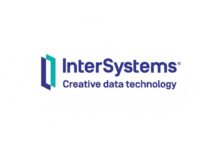The rapid integration of artificial intelligence into healthcare systems represents one of the most significant technological transformations in modern medicine. As AI applications expand from diagnostic imaging to treatment recommendations and patient monitoring, healthcare organizations find themselves navigating an increasingly complex landscape of legal obligations and ethical responsibilities. The global market for AI in healthcare, projected to reach $19 billion by 2027, underscores the urgent need to establish robust frameworks that balance innovation with patient protection. This transformation demands careful consideration of liability structures, regulatory compliance requirements, and ethical principles that will shape the future of medical practice while ensuring that technological advancement does not compromise fundamental human rights or patient welfare.┬Ā
Regulatory Landscapes and Legal Frameworks Across Jurisdictions┬Ā
International Approaches to AI Healthcare Regulation┬Ā
The regulatory approach to artificial intelligence in healthcare varies significantly across jurisdictions, reflecting different cultural values, legal traditions, and technological priorities. The European Union has established itself as a leader in comprehensive AI regulation through the Artificial Intelligence Act, which came into effect in 2024. This regulation categorizes AI systems based on risk levels and mandates strict compliance requirements for high-risk applications, particularly those used in healthcare settings. Under this framework, AI systems that diagnose diseases or recommend treatments must undergo rigorous pre-market assessments and continuous post-market monitoring.┬Ā
In contrast, the United States has adopted a more fragmented approach, relying primarily on existing regulatory frameworks adapted for AI applications. The Food and Drug Administration has approved 882 AI-enabled medical devices as of March 2024, with 96.7% receiving clearance through the 510(k) pathway. This pathway requires demonstration of substantial equivalence to existing approved devices, creating a regulatory environment that favors incremental improvements over revolutionary innovations. The FDA’s approach emphasizes transparency requirements and human oversight while allowing for expedited approval processes that encourage innovation.┬Ā
The United Kingdom, Australia, and Canada have chosen to apply technology-neutral laws to AI applications rather than creating AI-specific regulations. This approach provides flexibility but can create uncertainty for developers and healthcare providers seeking clear guidance on compliance requirements. Japan and South Korea are developing risk-based frameworks that attempt to balance innovation promotion with safety assurance, while China has implemented state-controlled approval processes that reflect its unique regulatory philosophy.┬Ā
AI Healthcare Legal Frameworks┬Ā
| Jurisdiction┬Ā | Framework Type┬Ā | Key Focus┬Ā | Approval Process┬Ā | Implementation Status┬Ā |
| United States┬Ā | FDA Guidelines┬Ā | Medical Device Safety┬Ā | 510(k) Clearance┬Ā | Active┬Ā |
| United States┬Ā | AI Bill of Rights┬Ā | Consumer Protection┬Ā | Not Applicable┬Ā | Blueprint Stage┬Ā |
| European Union┬Ā | AI Act┬Ā | High-Risk AI Systems┬Ā | Conformity Assessment┬Ā | Active (2024)┬Ā |
| European Union┬Ā | GDPR┬Ā | Data Protection┬Ā | DPO Required┬Ā | Active (2018)┬Ā |
| United Kingdom┬Ā | Technology-Neutral Laws┬Ā | Existing Regulations┬Ā | Case-by-Case┬Ā | Active┬Ā |
| Australia┬Ā | Technology-Neutral Laws┬Ā | Existing Regulations┬Ā | Case-by-Case┬Ā | Active┬Ā |
| Japan┬Ā | AI-Specific Laws┬Ā | Innovation & Safety┬Ā | Risk-Based┬Ā | In Development┬Ā |
| South Korea┬Ā | AI-Specific Laws┬Ā | Innovation & Safety┬Ā | Risk-Based┬Ā | In Development┬Ā |
| China┬Ā | AI-Specific Laws┬Ā | State Control┬Ā | State Approval┬Ā | Active┬Ā |
| Canada┬Ā | Technology-Neutral Laws┬Ā | Privacy Protection┬Ā | Health Canada Review┬Ā | Active┬Ā |
Compliance Burdens and Harmonization Challenges┬Ā
These diverging regulatory approaches create significant compliance burdens for companies developing and deploying AI healthcare solutions across multiple markets. Organizations must navigate different approval processes, documentation requirements, and ongoing monitoring obligations depending on their target markets. The lack of international harmonization means that a device approved in one jurisdiction may require entirely different validation studies and documentation for approval elsewhere.┬Ā
Efforts toward international collaboration are emerging through organizations like the World Health Organization, which has published regulatory considerations for AI in health. These guidelines emphasize the need for documentation and transparency, risk management approaches, intended use validation, and data quality assurance. However, translating these high-level principles into consistent regulatory frameworks across different legal systems remains a significant challenge.┬Ā
Liability Attribution and Legal Responsibility┬Ā
Medical Malpractice in the AI Era┬Ā
The integration of AI into clinical decision-making fundamentally alters traditional concepts of medical malpractice and professional liability. In conventional medical practice, liability typically centers on the physician’s duty of care, the standard of care expected within the medical community, and the causal relationship between actions and patient harm. AI introduces additional complexity by creating scenarios where multiple parties may share responsibility for patient outcomes, including the healthcare provider, AI developer, healthcare institution, and potentially the data providers whose information trained the AI system.┬Ā
Recent legal analysis reveals that liability claims involving AI generally fall into three categories: harm caused by defects in software used to manage care or resources, physicians’ reliance on erroneous software recommendations, and malfunctioning of software embedded in medical devices. The case of Lowe v. Cerner exemplifies the first category, where a drug-management software product’s defective user interface led physicians to mistakenly believe they had scheduled medication that was never administered. Such cases highlight how user interface design decisions by AI developers can directly impact patient safety and create liability exposure.┬Ā
The second category involves more complex questions about professional judgment and the standard of care. When physicians rely on AI recommendations that prove incorrect, courts must determine whether the physician’s reliance was reasonable given the AI system’s known capabilities and limitations. This analysis requires consideration of factors such as the AI system’s validation status, the availability of alternative diagnostic methods, and the physician’s independent clinical assessment.┬Ā
Shared Liability Models and Risk Distribution┬Ā
The emergence of shared liability models reflects the reality that AI-enabled healthcare decisions involve multiple stakeholders with varying degrees of control and expertise. Healthcare providers maintain ultimate responsibility for patient care decisions but may lack the technical expertise to fully evaluate AI system reliability. AI developers possess technical knowledge about system capabilities and limitations but may have limited understanding of clinical contexts and patient-specific factors.┬Ā
This distribution of expertise and control creates challenges for traditional tort law concepts that typically assume a single responsible party. Some jurisdictions are exploring presumptive liability frameworks where the burden of proof shifts to defendants under certain circumstances. The European Union’s proposed AI Liability Directive introduces rebuttable presumptions regarding both causation and fault when high-risk AI systems are involved in patient harm. These presumptions are triggered when there is non-compliance with AI Act obligations and when the defendant’s negligent conduct reasonably influenced the AI output that caused damage.┬Ā
Insurance and Risk Management Implications┬Ā
The complexity of AI liability has significant implications for professional liability insurance and institutional risk management strategies. Traditional medical malpractice insurance policies may not adequately cover risks associated with AI system failures or may require specific endorsements for AI-related claims. Healthcare organizations must carefully negotiate licensing agreements with AI developers to ensure appropriate risk allocation and indemnification provisions.┬Ā
Risk assessment frameworks are emerging to help healthcare organizations evaluate the liability exposure associated with different AI tools. These frameworks consider factors such as the likelihood and nature of errors, the probability that errors will be detected before causing harm, the potential severity of consequences, and the likelihood that injuries would result in compensable tort claims. Organizations using these frameworks can make more informed decisions about AI adoption and implement appropriate safeguards to minimize liability exposure.
AI Healthcare Liability Scenarios┬Ā
| Scenario Type┬Ā | Primary Liability┬Ā | Secondary Liability┬Ā | Legal Basis┬Ā | Typical Damages┬Ā | Prevention Strategy┬Ā |
| Diagnostic Error┬Ā | Healthcare Provider┬Ā | AI Developer┬Ā | Medical Malpractice┬Ā | Patient Harm┬Ā | Validation Studies┬Ā |
| Treatment Recommendation┬Ā | Shared Liability┬Ā | AI Developer┬Ā | Negligence┬Ā | Inappropriate Treatment┬Ā | Clinical Guidelines┬Ā |
| Data Breach┬Ā | Data Controller┬Ā | Healthcare Institution┬Ā | Data Protection Laws┬Ā | Privacy Violation┬Ā | Security Measures┬Ā |
| Algorithmic Bias┬Ā | AI Developer┬Ā | Healthcare Provider┬Ā | Discrimination Laws┬Ā | Discriminatory Outcomes┬Ā | Bias Testing┬Ā |
| System Malfunction┬Ā | Device Manufacturer┬Ā | Healthcare Provider┬Ā | Product Liability┬Ā | Patient Injury┬Ā | Quality Assurance┬Ā |
| Inadequate Training┬Ā | Healthcare Institution┬Ā | AI Developer┬Ā | Institutional Negligence┬Ā | Substandard Care┬Ā | Staff Education┬Ā |
| Consent Issues┬Ā | Healthcare Provider┬Ā | AI Developer┬Ā | Informed Consent┬Ā | Autonomy Violation┬Ā | Clear Disclosure┬Ā |
| Off-Label Use┬Ā | Healthcare Provider┬Ā | AI Developer┬Ā | Off-Label Liability┬Ā | Unexpected Outcomes┬Ā | Usage Guidelines┬Ā |
Ethical Principles and Moral Considerations┬Ā
Foundational Bioethical Principles in AI Context┬Ā
The application of traditional bioethical principles to AI-enabled healthcare reveals both continuities with established medical ethics and novel challenges requiring new frameworks. The principle of beneficence, requiring that medical interventions promote patient welfare, takes on new dimensions when AI systems demonstrate superior diagnostic accuracy or treatment optimization capabilities. However, realizing these benefits requires careful attention to implementation processes, validation studies, and ongoing performance monitoring to ensure that theoretical advantages translate into improved patient outcomes.┬Ā
Non-maleficence, the imperative to “do no harm,” becomes particularly complex in AI contexts where harm can result from system errors, biased algorithms, or over-reliance on automated recommendations. The potential for AI systems to perpetuate or amplify existing healthcare disparities creates new categories of potential harm that extend beyond individual patient encounters to broader population health effects. Healthcare organizations must therefore consider both direct patient safety risks and systemic equity implications when implementing AI tools.┬Ā
The principle of patient autonomy requires that individuals have meaningful control over medical decisions affecting them. AI systems can both enhance and undermine autonomy depending on how they are implemented. When AI provides more accurate information or identifies treatment options that might otherwise be overlooked, it can enhance patients’ ability to make informed choices. However, when AI recommendations are presented without adequate explanation or when patients lack understanding of how AI influences their care, autonomy may be compromised.
AI Healthcare Ethical Considerations┬Ā
| Ethical Principle┬Ā | Key Challenge┬Ā | Current Risk Level┬Ā | Mitigation Strategy┬Ā | Stakeholder Responsibility┬Ā |
| Beneficence┬Ā | Ensuring AI improves patient outcomes┬Ā | Medium┬Ā | Evidence-based validation┬Ā | Developers & Clinicians┬Ā |
| Non-maleficence┬Ā | Preventing AI-caused harm┬Ā | High┬Ā | Robust testing protocols┬Ā | All Stakeholders┬Ā |
| Autonomy┬Ā | Maintaining patient choice┬Ā | High┬Ā | Informed consent processes┬Ā | Healthcare Providers┬Ā |
| Justice┬Ā | Equal access to AI benefits┬Ā | High┬Ā | Bias detection & correction┬Ā | Developers & Regulators┬Ā |
| Transparency┬Ā | Black box algorithms┬Ā | High┬Ā | Explainable AI development┬Ā | Developers┬Ā |
| Accountability┬Ā | Liability attribution┬Ā | High┬Ā | Clear liability frameworks┬Ā | Legal Framework┬Ā |
| Privacy┬Ā | Data protection┬Ā | High┬Ā | Privacy-by-design approach┬Ā | Developers & Institutions┬Ā |
| Fairness┬Ā | Algorithmic bias┬Ā | High┬Ā | Diverse training data┬Ā | Developers & Data Scientists┬Ā |
| Human Dignity┬Ā | Human-AI relationship┬Ā | Medium┬Ā | Human oversight requirements┬Ā | Healthcare Providers┬Ā |
| Trust┬Ā | Reliability concerns┬Ā | Medium┬Ā | Transparent communication┬Ā | All Stakeholders┬Ā |
Algorithmic Fairness and Healthcare Equity┬Ā
Algorithmic bias represents one of the most significant ethical challenges in AI healthcare implementation. Studies have documented systematic biases in AI systems that can lead to disparate impacts on different demographic groups, potentially exacerbating existing healthcare inequalities. These biases can arise from multiple sources, including historical inequities reflected in training data, genetic variations affecting algorithm performance across populations, and differences in healthcare access that create sampling biases.┬Ā
The challenge of achieving algorithmic fairness is compounded by the fact that different definitions of fairness can be mathematically incompatible. For example, ensuring equal accuracy across demographic groups may conflict with ensuring equal treatment recommendations, creating trade-offs that require explicit ethical choices. Healthcare organizations must therefore engage in deliberate discussions about which fairness metrics to prioritize and how to balance competing ethical considerations.┬Ā
Mitigation strategies for algorithmic bias include diverse data collection, algorithmic auditing, and continuous monitoring for disparate impacts. However, these technical approaches must be complemented by organizational commitments to equity and systematic processes for identifying and addressing bias when it occurs. The FAIR (Fairness of Artificial Intelligence Recommendations) framework provides a comprehensive approach that includes ensuring diverse training data, implementing independent audits, educating stakeholders about bias, and establishing accountability mechanisms.┬Ā
Transparency and Explainability Requirements┬Ā
The “black box” nature of many AI systems creates significant challenges for transparency and accountability in healthcare decision-making. Patients have legitimate interests in understanding how medical recommendations are generated, particularly when AI plays a substantial role in diagnosis or treatment planning. Healthcare providers need sufficient insight into AI reasoning to maintain appropriate clinical oversight and to explain recommendations to patients.┬Ā
However, the technical complexity of modern AI systems makes complete transparency impractical in many cases. Deep learning models may involve millions of parameters and complex non-linear relationships that resist simple explanation. This has led to the development of explainable AI techniques that attempt to provide interpretable approximations of AI decision-making processes without revealing proprietary algorithms or overwhelming users with technical details.┬Ā
The challenge is determining what level of explanation is sufficient to meet ethical obligations while remaining practically feasible. Different stakeholders may require different types and levels of explanation. Patients may need high-level summaries of how AI contributes to their care, while healthcare providers may need more detailed information about system capabilities and limitations. Regulators may require comprehensive documentation of validation studies and performance characteristics.┬Ā
Patient Rights and Informed Consent in AI-Mediated Care┬Ā
Evolving Standards for AI Disclosure┬Ā
The question of when and how to inform patients about AI involvement in their care has become increasingly complex as AI systems become more sophisticated and ubiquitous. Traditional informed consent frameworks were designed for discrete medical procedures with clearly defined risks and benefits. AI systems often operate continuously in the background, influencing multiple aspects of care delivery in ways that may not be immediately apparent to patients or even healthcare providers.┬Ā
Current legal and ethical frameworks generally support disclosure of AI use when it materially affects diagnosis, treatment recommendations, or clinical decision-making. However, the practical implementation of this principle requires careful consideration of factors such as the degree of AI involvement, the availability of alternative approaches, and the patient’s expressed preferences for information about their care.┬Ā
Research on patient preferences reveals significant variation in desired levels of AI disclosure, with factors such as age, education, and health literacy influencing information needs. Some patients prefer detailed explanations of AI capabilities and limitations, while others are primarily concerned with outcomes rather than processes. This variation suggests that effective informed consent processes should be tailored to individual patient preferences rather than applying uniform disclosure standards.┬Ā
Consent Complexity and Decision-Making Frameworks┬Ā
The complexity of AI systems creates challenges for meaningful informed consent that go beyond simple disclosure requirements. Patients must understand not only that AI is being used but also how it influences their care options and what alternatives might be available. This is particularly challenging when AI systems operate as decision support tools rather than autonomous decision-makers, creating ambiguity about the relative contributions of human and artificial intelligence to clinical recommendations.┬Ā
Different AI applications may require different consent approaches. AI used for administrative purposes or basic data analysis may require minimal disclosure, while AI systems that directly influence diagnosis or treatment recommendations may require more comprehensive consent processes. AI systems used for prognosis or survival prediction may require the most detailed consent, given their direct impact on life-altering medical decisions.┬Ā
The development of standardized frameworks for AI-related informed consent is still in early stages. Some healthcare organizations have implemented AI-specific consent processes that explain the role of AI in care delivery, describe system capabilities and limitations, and provide patients with options to opt out of AI-assisted care when alternatives are available. However, the effectiveness of these approaches in promoting genuine understanding and autonomous decision-making requires further research and refinement.┬Ā
Implementation Challenges and Practical Solutions
Organizational and Technical Barriers┬Ā
Healthcare organizations implementing AI systems face numerous challenges that extend beyond regulatory compliance and ethical frameworks. Technical barriers include data integration complexities, where AI systems must interface with existing electronic health record systems that may use different data formats or quality standards. Interoperability challenges can prevent AI systems from accessing the comprehensive data needed for optimal performance, while concerns about algorithm transparency can create trust issues among healthcare providers.┬Ā
Organizational barriers often prove more challenging than technical issues. Workflow integration requires careful analysis of existing clinical processes and gradual implementation strategies that minimize disruption to patient care. Change management becomes critical as healthcare staff must adapt to new decision-making processes while maintaining confidence in their professional judgment. The success of AI implementation depends heavily on user acceptance, which is influenced by factors such as system design, training quality, and demonstrated value in clinical practice.┬Ā
Professional Education and Training Requirements┬Ā
The successful integration of AI into healthcare practice requires comprehensive education programs that address both technical and ethical aspects of AI use. Healthcare professionals need understanding of AI capabilities and limitations, recognition of potential biases and errors, and skills for appropriately integrating AI recommendations with clinical judgment. This education must be ongoing, as AI systems continue to evolve and new applications are introduced.┬Ā
Training programs must address the risk of automation bias, where healthcare providers may become overly reliant on AI recommendations without maintaining appropriate critical oversight. Conversely, training must also address resistance to AI adoption that may stem from concerns about professional autonomy or job displacement. Effective programs emphasize AI as a tool to enhance rather than replace human clinical expertise.┬Ā
Professional medical education curricula are beginning to incorporate AI literacy as a core competency, but this integration is still in early stages. Medical schools, residency programs, and continuing education providers are developing new approaches to AI education that balance technical understanding with ethical reasoning and practical application skills.┬Ā
Future Directions and Emerging Considerations┬Ā
The regulatory and ethical landscape for AI in healthcare continues to evolve rapidly as technology advances and real-world experience accumulates. Emerging technologies such as generative AI, federated learning, and blockchain integration present new opportunities and challenges that existing frameworks may not adequately address. The integration of AI with Internet of Things devices and continuous monitoring systems will expand the scope of AI influence on patient care while creating new privacy and security considerations.┬Ā
International efforts toward regulatory harmonization may reduce compliance burdens and facilitate innovation, but achieving meaningful coordination across different legal systems and cultural contexts remains challenging. Professional medical organizations, technology companies, and regulatory agencies must collaborate to develop standards and best practices that can serve as the foundation for more coordinated approaches to AI governance.┬Ā
The ultimate success of AI in healthcare will depend not only on technological capabilities but on the development of legal, ethical, and practical frameworks that ensure AI serves human values and promotes equitable access to high-quality care. This requires ongoing dialogue among all stakeholders, including patients, healthcare providers, technology developers, policymakers, and ethicists, to navigate the complex trade-offs inherent in AI implementation while maximizing benefits and minimizing risks for all members of society.┬Ā


















